The week at a glance
- Glaucous-winged Gull in Co Cork
- Mourning Dove on Shetland
- Little Swifts in Lothian and the Channel Islands
- Hudsonian Whimbrel again in Cornwall
- Three Pacific Divers noted around Britain & Ireland
- Big passage of Little Auks and Little Gulls
Continuing the theme of recent weeks, the Christmas and New Year period was an extremely mild and wet affair characterised by a deluge of flooding, particularly across the northern half of our isles. Despite the weather's best efforts to spoil it, the birding wasn't actually all that bad, and a series of new discoveries ensured that things kept ticking along — one or two of them even threatening to disrupt some birders' plans in favour of a Christmas twitch.
This year's Boxing Day mega discovery was a Mourning Dove on Shetland. All six previous British and Irish records of this Nearctic dove have occurred across a relatively narrow late-autumn window (from late October until mid-November), so a mid-winter occurrence was something new for our shores. The bird, which turned up in Lerwick, lingered into 2016 and also represents the first record for Shetland. It was twitched by a small number of birders from the mainland, some opting for the Northlink ferry service from Aberdeen — anyone who has been on this boat, and knows how bumpy the ride can be, will no doubt agree that was a very brave decision given the rather stormy conditions of late! It was still present on 5th, and an extended stay may well be on the cards — though the Oriental Turtle Dove from early December seems to have moved to the Faroe Islands after threatening to stay around all winter (more on that bird later).
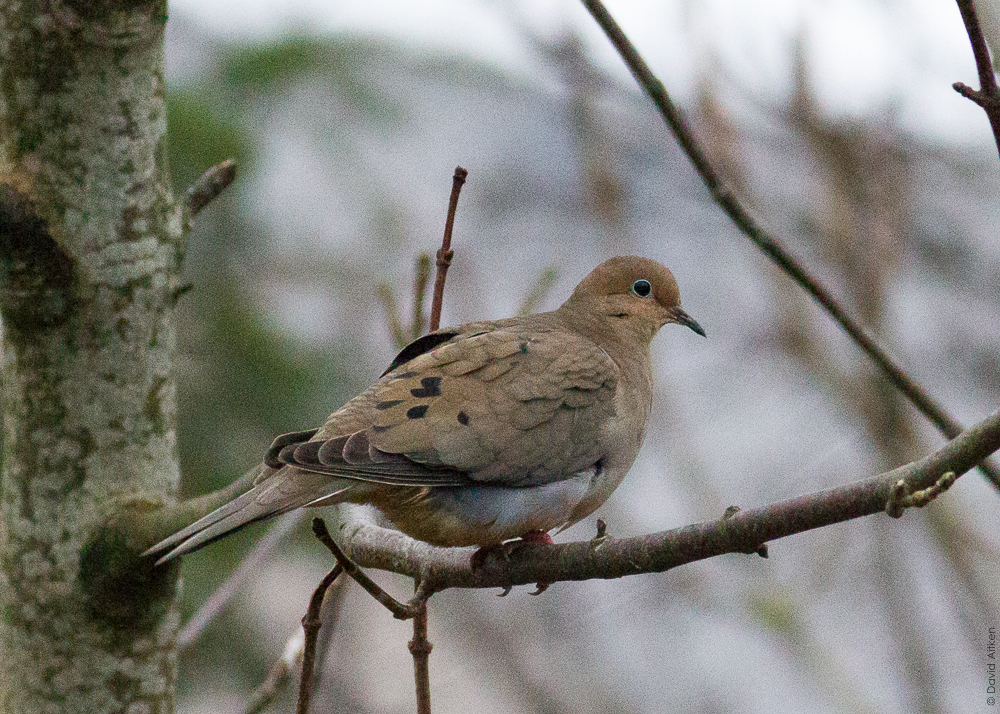
Mourning Dove, Lerwick, Mainland, Shetland (Photo: David Aitken)
For Irish birders, the New Year could not have begun in more emphatic style as Ireland's first Glaucous-winged Gull was found at Castletown Bearhaven, Co Cork, on 2nd. A smart adult-type, it was still present the following morning (much to the delight of the gathered crowd) and typically found the lure of a cheap white loaf irresistible, giving all those present some fantastic point-blank views. Though its primaries seem a bit of a mess (it appears to still be regrowing p10 and sports damage to at least one feather), there is no doubt about the identification and this is easily the most confiding example of this species recorded in Britain and Ireland so far. Following hot on the heels of Slaty-backed Gulls in 2014 and 2015, Ireland is enjoying a good run of Pacific gulls at present and a fine adult Black-tailed would go down a treat in the coming weeks ...
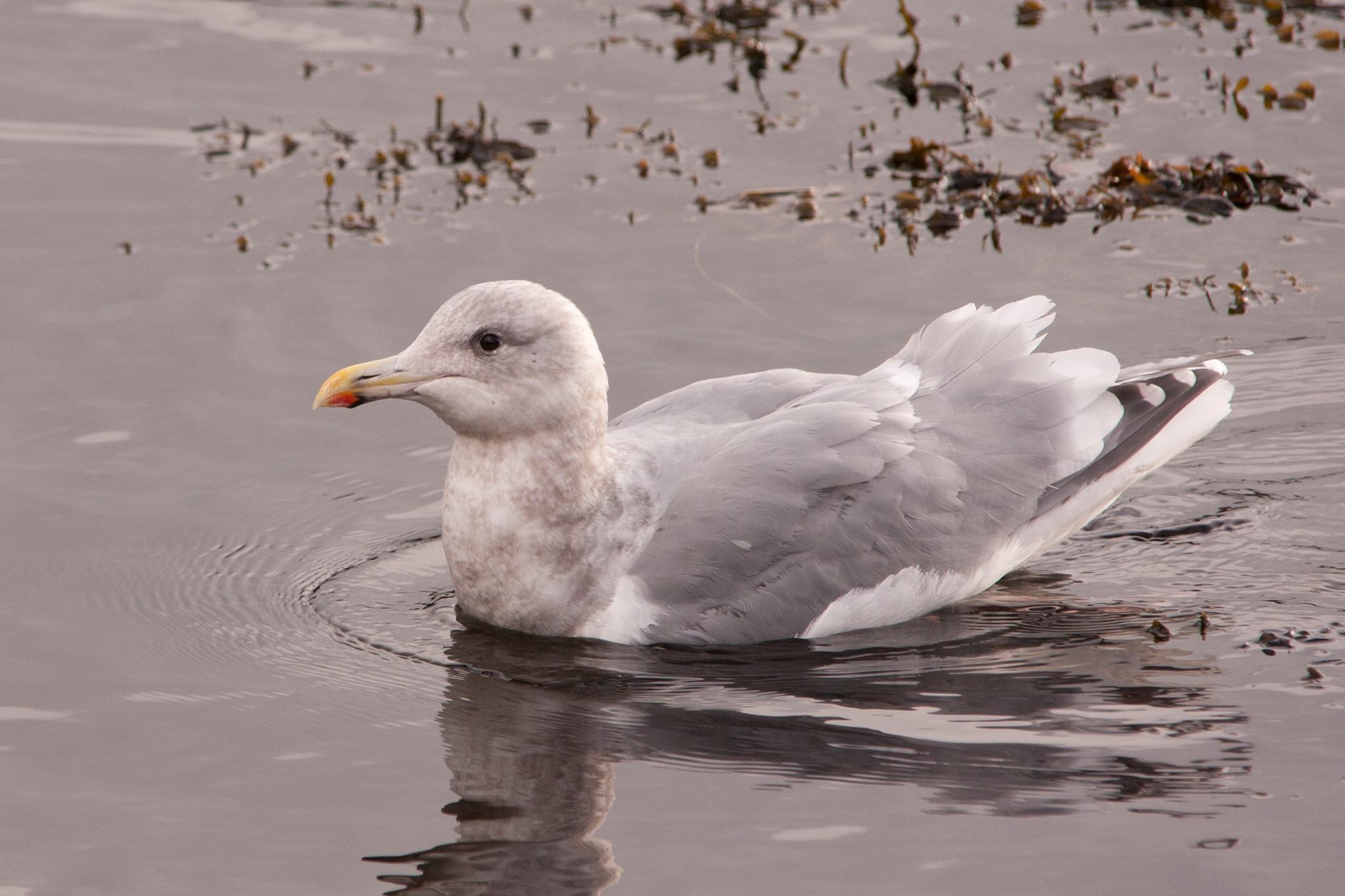
Glaucous-winged Gull, Castletown Bearhaven, Cork (Photo: Caleb Knight)
Glaucous-winged Gull, Castletown Bearhaven, Cork (Video: Mike O'Keeffe)

Glaucous-winged Gull twitch, Castletownbere, 3 January 2016 (Photo: Séamus Feeney)
If the gull offered joy, the corpse of an adult Brown Booby in the same county was a real case of "what could have been". Found on the tideline at Owenahincha on 2nd, the bird appeared to have been dead for some time, and one can't imagine that this will go very far in terms of being admitted to the national list.

Brown Booby, Owenahincha, Cork (Photo: Ciaran Cronin)
If you'd said in the run-up to the Christmas period that there would have been two records of Little Swift over the New Year, many birders would likely have looked at you with a mixture of surprise and disdain. Mid-winter records of this species were, until this year, unheard of in Britain and Ireland, although the recent run of very late Common Swifts, Red-rumped Swallow and other hirundines certainly hinted that this was no normal winter and that something even more surprising might follow. The first was discovered at Fort le Crocq, Guernsey, on 30th and was well photographed, eliminating any possible doubt over identification and authenticity, even if a Little Swift at this time of year seemed beyond belief. Another then followed on New Year's Eve, hundreds of miles away at Thorntonloch, Lothian — the distance and timespan between records surely confirming that this, quite unbelievably, was a second individual. Initially reported as a possible White-rumped Swift (a species that possibly occurred in Co Dublin on Christmas Day 2002 but remains unaccepted), the description of a square tail and bulging white rump soon pointed towards Little. Unfortunately for prospective New Year's Day twitchers (or fortunately for those who didn't want their New Year's plans disrupted), the bird disappeared after an hour or so, never to be seen again.
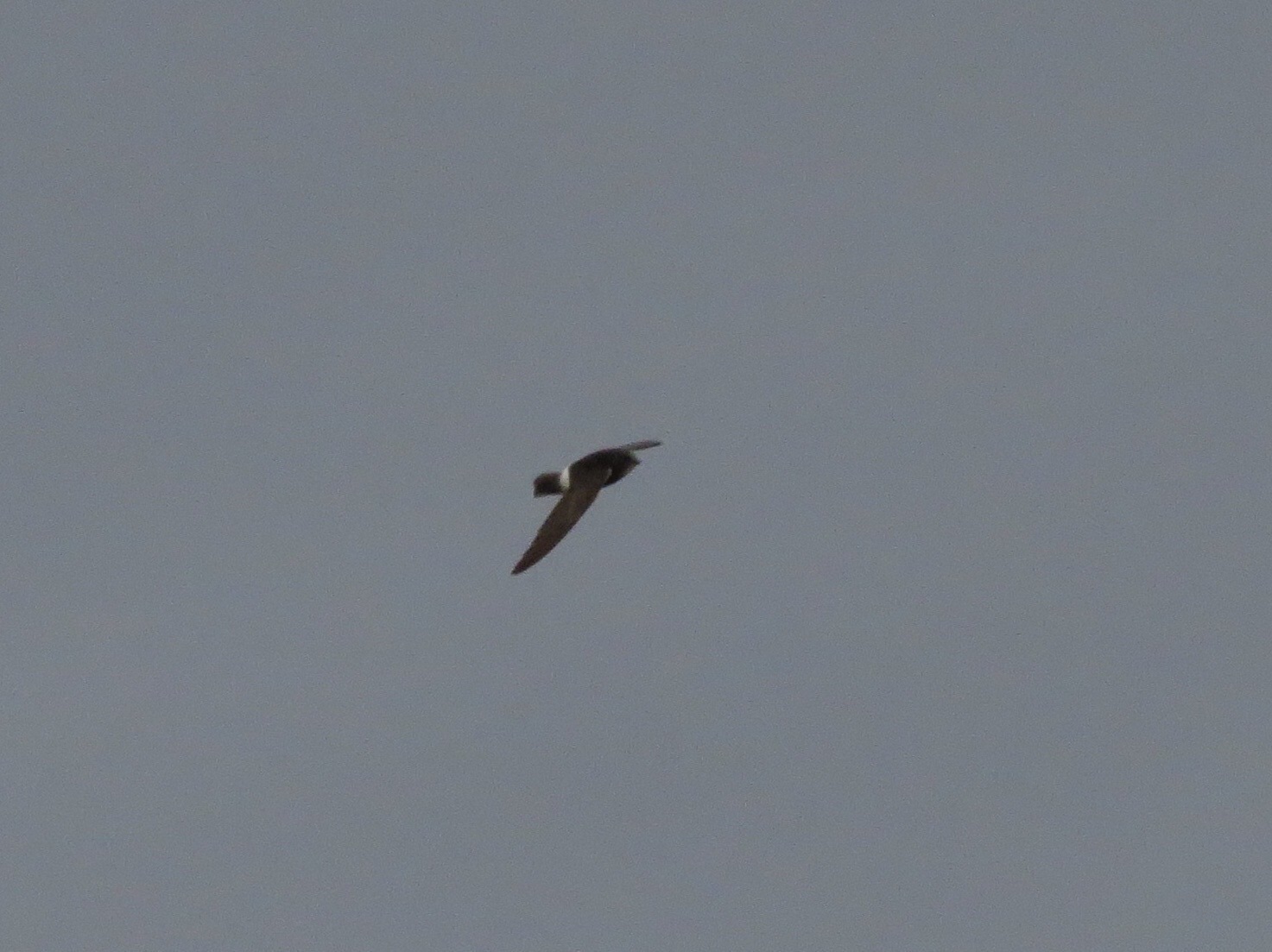
Little Swift, Fort le Crocq, Guernsey (Photo: Mark Guppy)
In Cornwall the regular adult Pacific Diver continued to perform in Mount's Bay throughout the Christmas week and into 2016, while what is presumably the intermittently seen second bird was off Maenporth on New Year's Eve. Assuming that it is the same individual, this is the first report since that from Pendower Beach back in February. Similarly long staying but rarely seen is the Pacific Diver in Galway Bay, recorded off Tawin on 5th; assuming it is the same bird, this individual was first recorded in 2010 and has been seen only very occasionally since. Back in Mount's Bay, the Hudsonian Whimbrel appeared at Marazion again on New Year's Eve and was seen daily to 5th — it was last reported here on 9 November.
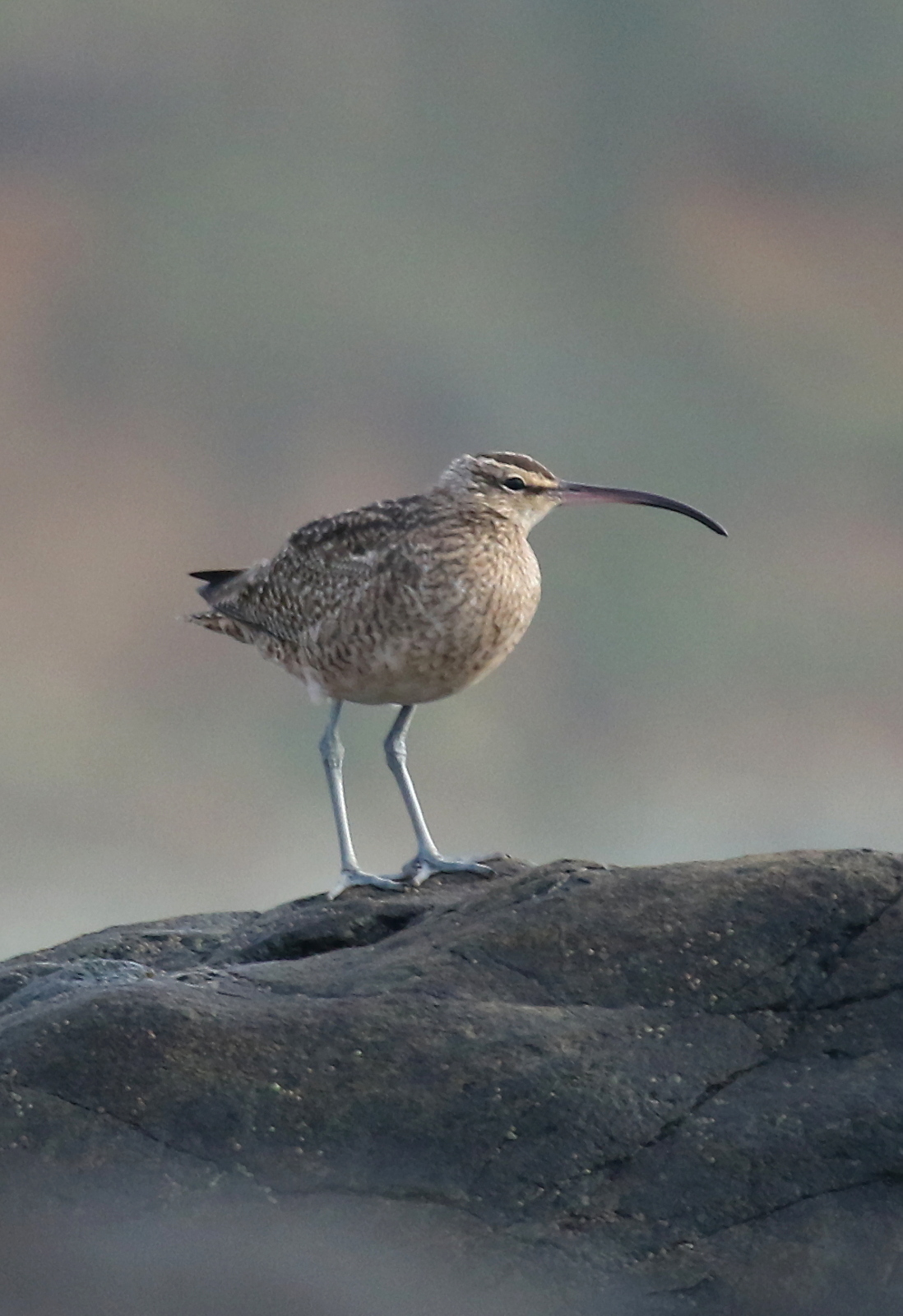
Hudsonian Whimbrel, Marazion, Cornwall (Photo: Jaz)
Though far from a rarity, Little Auk was another of the fortnight's star species. While large passages are a near-annual occurrence in late autumn and early winter, it's more unusual for such big numbers to be recorded in our waters at the end of December and early January. We carried well over 200 reports of these diminutive alcids during the fortnight, most occurring in the opening days of January. The highest numbers appeared off eastern Scotland (where the weather was at its rawest), though reasonable totals also came from north-east England, too. High counts included 1,016 past Girdle Ness, Aberdeenshire, in just an hour on 4th, and 1,100 past Hound Point, Lothian, in 90 minutes the same morning; several sites also managed totals of several hundred, while many were found dead or dying inland — odd reports from farmyards, vegetable patches and roads were all received.
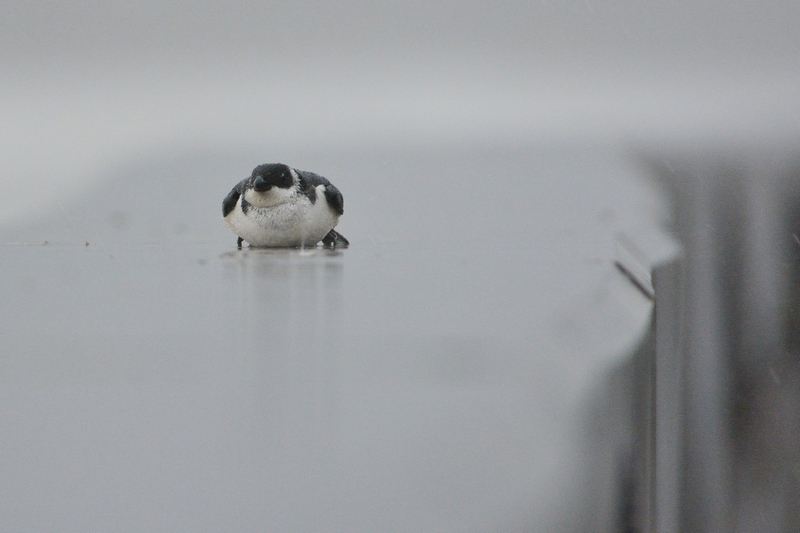
Little Auk, Arbroath, Angus & Dundee (Photo: Barry Farquharson)

Little Auk, Musselburgh, Lothian (Photo: S Gillies)
The returning adult White-billed Diver was again off South Ronaldsay from 31st. The only new Surf Scoter seen over the fortnight was a drake off Easting, Unst, on New Year's Day. Young males remained in Cleveland to Boxing Day and off Filey, N Yorks, throughout. Up to three drakes remained off the Conwy coastline, while single males continued in Fife and Lothian. A female King Eider off Ruddon's Point, Fife, from 27th is presumably a returning bird from previous winters; elsewhere, a drake was again off Nairn from 25–27th.
Lesser Scaup have been a little thin on the ground this winter and the paucity of sightings continued over Christmas; drakes remained on Shetland and in Somerset, while the adult male returned to Dozmary Pool, Cornwall, from 17th. Ring-necked Ducks were more numerous, with 11 recorded. These included new birds at Ovens, Co Cork, on 27th (a drake) and at Hilton, Derbyshire, on 30th (a female), in addition to several long-stayers, such as the two females near Andover, Hants, and a returning drake in Co Waterford. Drake Ferruginous Ducks were still at Blashford Lakes, Hants, and Washington WWT, Durham.
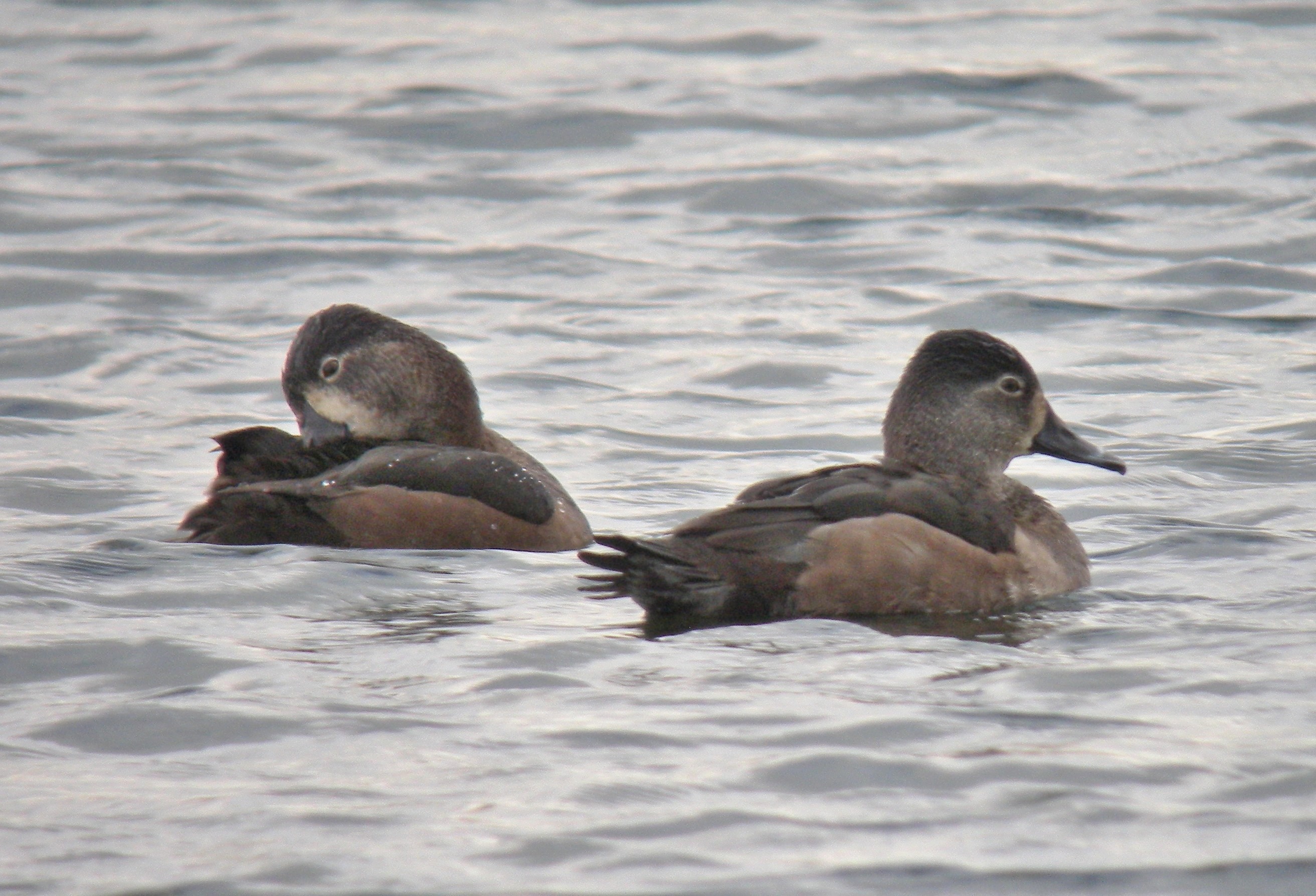
Ring-necked Duck, Rooksbury Mill LNR, Hampshire (Photo: Doug Kelson)
A respectable seven American Wigeon, all drakes, were recorded across Britain and Ireland over the fortnight. One arrived at Grindon Lough, Northumberland, on 3rd and another was found at Malin Town, Co Donegal, on 28th; elsewhere birds were in Devon, Aberdeenshire, Highland (two) and Argyll, this last alongside two Green-winged Teal at Loch Gruinart, Islay, on Christmas Eve. A healthy 16 further Green-winged Teal were reported nationwide.
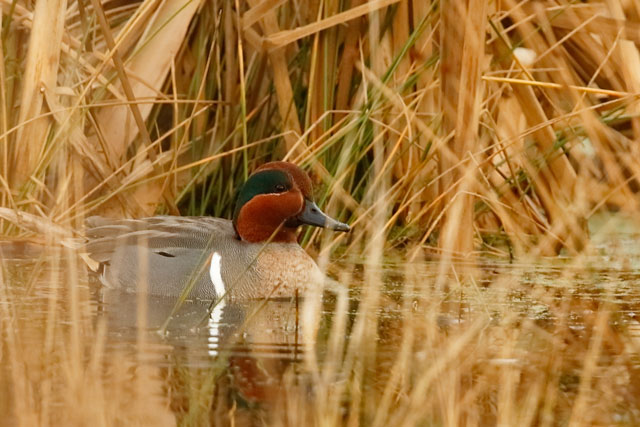
Green-winged Teal, Howdon Wetland NR, Northumberland (Photo: Colin Bradshaw)
Four blue-morph Snow Geese, an adult and three juveniles, were among Pink-feet at Kemnay, Aberdeenshire, on 27th and five were reported 'recently' at Tregaron Bog, Ceredigion, on 30th. The white morph was still with the Solway Barnacle Geese throughout and a blue morph was in the same county at Millom on 4th. Both Richardson's Cackling Goose and Todd's Canada Goose were with Barnacle Geese in Co Sligo, while another of the former was among Canada Geese on the Lower Test Marshes, Hants, on 2nd. At least six Black Brants were seen along the English coast between Devon and East Yorkshire, with at least one on Jersey on 26–27th.
There was a noticeable influx of Glossy Ibis over the fortnight, many of them in southern Ireland. Up to 20 were seeen at Tramore, Co Waterford, from 29th onwards and a number of smaller flocks were in Cork (four at Dunmanus on 30th and twos at Barley Cove and White's Marsh). One reached as far north as Ormiclate, S Uist, from 31–2nd and further new individuals were reported in Pembrokeshire on 29th and Staffordshire on 1st.

Glossy Ibis, Crookhaven, Cork (Photo: Richard Mills)
The Sea Palling Cattle Egret was seen until New Year's Eve before presumably relocating to Iken, Suffolk, on 2nd (and lingering there to 5th). Two birds were seen in Somerset (at Stockland Bristol and Mudgley, the latter found on 1st), two were in Devon, a long-stayer was again in Co Wexford and there were several reports from Jersey.
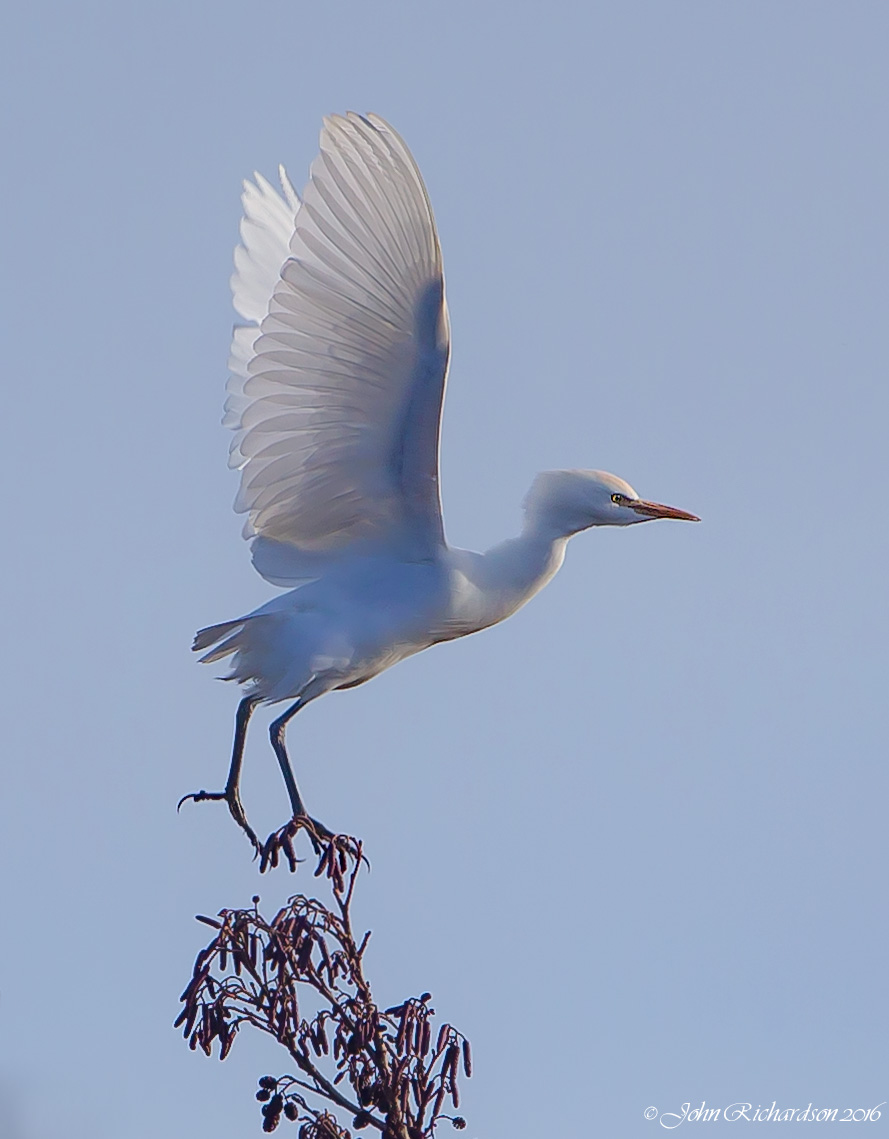
Cattle Egret, Iken, Suffolk (Photo: John Richardson)
After first being noted on 21st, the white Gyr Falcon was seen around Balranald, N Uist, with some regularity over the fortnight, and was still present on 4th — though it was typically mobile and difficult to catch up with. The juvenile Pallid Harrier continued to frequent the Flitcham area of Norfolk into 2016, while upwards of 15 Rough-legged Buzzards were noted, including at least two still at Choseley Drying Barns. The male Northern Harrier was again seen on North Ronaldsay on Boxing Day — the first report in over three weeks.

Gyrfalcon, Balranald RSPB, N.Uist, Outer Hebrides (Photo: Yvonne Benting)
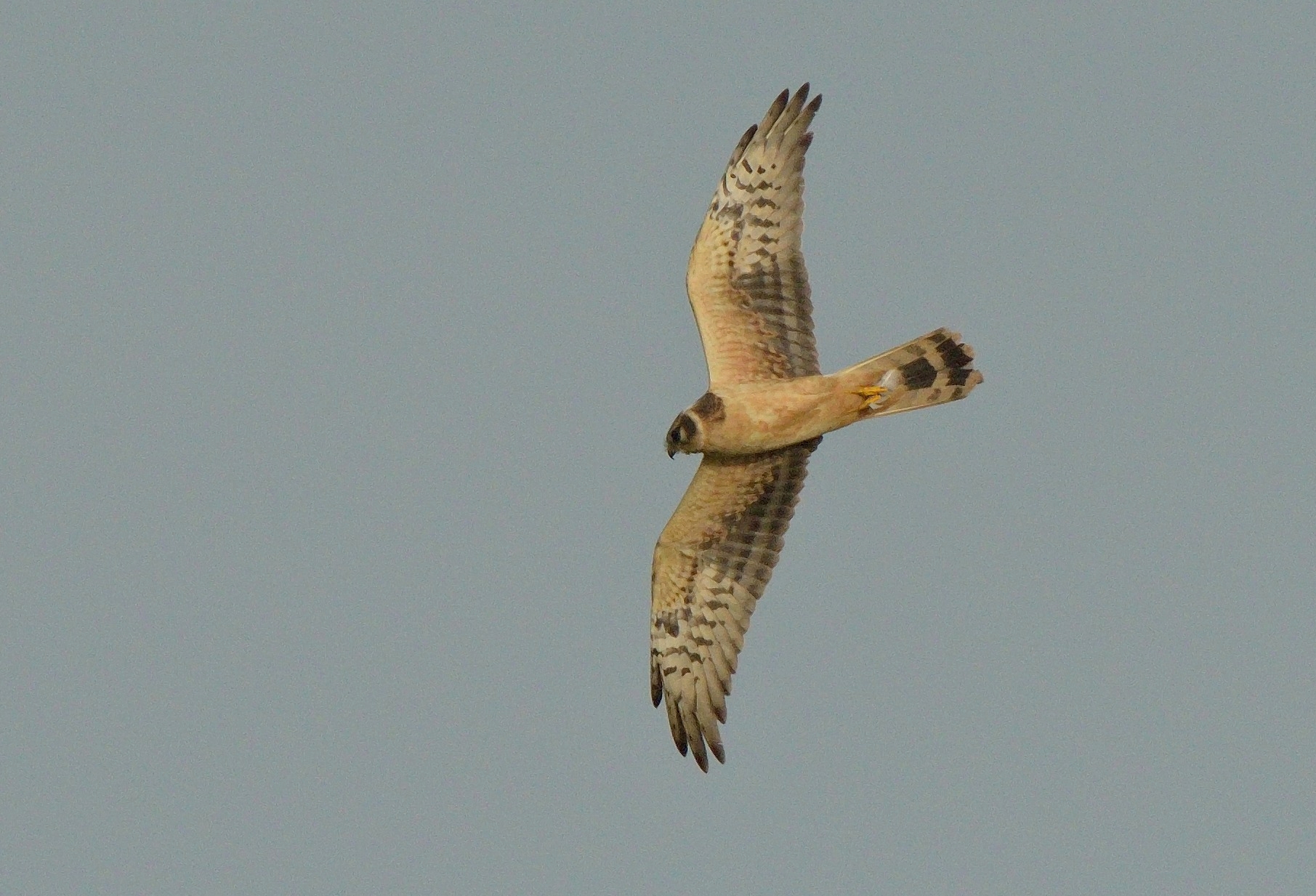
Pallid Harrier, Flitcham, Norfolk (Photo: Baz Scampion)
The Long-billed Dowitcher continued to probe its way around Cresswell Pond, Northumberland, to at least 4th and the Spotted Sandpiper was still at Pilmore, Co Cork, that day. Norfolk's Lesser Yellowlegs remained both mobile and elusive around the Breydon Water area but has been seen with some regularity since 29th; another was found at Greencastle, Co Down, on 26th. The Greater Yellowlegs was still at Whippingham, Isle of Wight, on 30th though an intriguing report of a probable from Titchfield Haven, Hants, on 2nd suggested the bird might have returned to its favoured haunt of last spring. Cambridgeshire's American Golden Plover remained at Pymoor to 22nd.

Lesser Yellowlegs, Greencastle, Down (Photo: Derek Charles)
In the somewhat inclement conditions, plenty of Grey Phalaropes were reported from around our coasts — many more than you'd normally expect at this time of year, but not entirely surprising given the weather.
An adult Ross's Gull was picked up off Lizard Point, Cornwall, on 2nd and was seen at Church Cove later that day before relocating to Bass Point on 3rd and 4th. The adult Bonaparte's Gull present for a matter of minutes at Wilstone Reservoir mid-morning on 4th was a long-awaited first for Hertfordshire. A first-winter was also reported from Lower Farm Gravel Pits, Berks, on Boxing Day and the regular adult continued to commute between Teignmouth and Exmouth, Devon. The elusive third-winter American Herring Gull continued to tantalise in Cornwall, being seen in Penzance on 20th and then at Mousehole on 29th. Ring-billed Gulls have been quite scarce so far this winter, so it was pleasing to see the fortnight's tally reach 20 birds including several new individuals in Ireland, the first-winter again in the Newlyn area of Cornwall and presumed returning adults at Strathclyde Loch, Clyde, and Llys-y-Fran Reservoir, Pembrokeshire. The Forster's Tern was again off Kinvarra, Co Galway, on 27th.
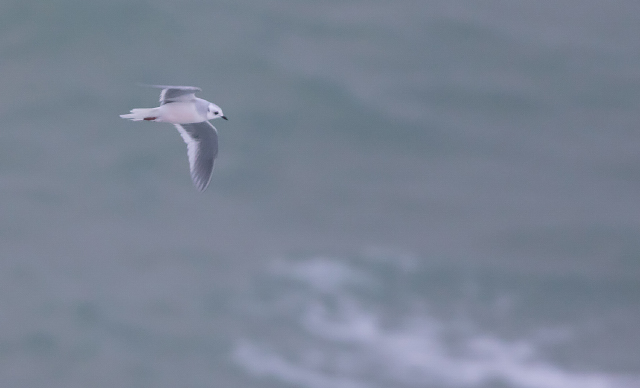
Ross's Gull, Bass Point, Cornwall (Photo: Tony Blunden)
A solid (if unexceptional) showing of Iceland Gulls saw birds reported from 65 sites nationwide over the two weeks; Glaucous Gulls were a little less numerous, with at least 55 sites recording the species. A rather impressive influx of Little Gulls occurred post-Christmas and into the New Year, with some very high counts of passing birds at coastal watchpoints and also unusual numbers well inland — for example 17 at Hilfield Park Reservoir, Herts, on 5th. These (and the Little Auks) were staple fodder for festive-season seawatches, though good numbers of Great Skuas (and lesser numbers of Arctic and Pomarine Skuas) also remained around our coasts.
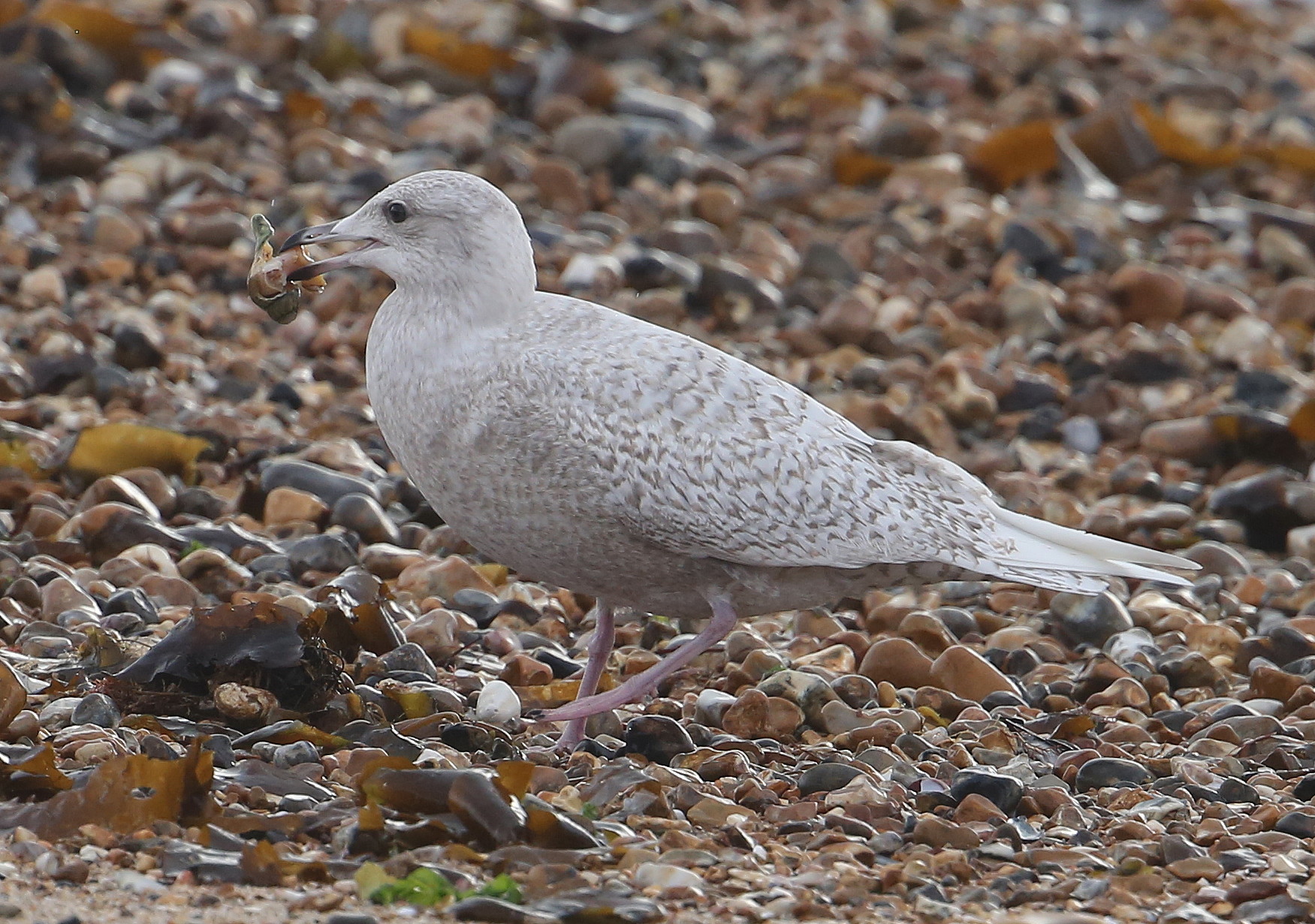
Iceland Gull, Southsea, Hampshire (Photo: Ted Pressey)
Staffordshire's Hoopoe battled through the often inclement conditions over the festive fortnight and was still present in its favoured quarry at Wall Heath on 5th. As well as the aforementioned Little Swifts, Common/Pallid Swifts were noted over Bearsted, Kent, and Cloughton Wyke, N Yorks, on 29th, while a probable Alpine Swift headed over La Roque, Jersey, on 28th to complete a very unusual late December line-up.
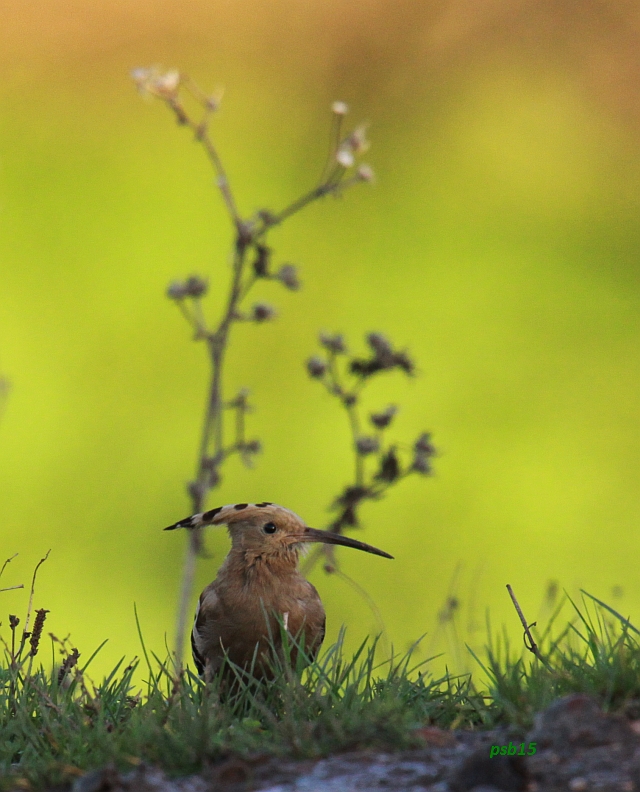
Hoopoe, Hinksford, Staffordshire (Photo: Paul Burgess)
Three Shore Larks continued to delight on the beach at Holme, Norfolk, throughout and another three were still along the coast at Burnham Overy to 1st; elsewhere, three remained in Hartlepool, Cleveland, and a singleton popped up on the Isle of Sheppey, Kent, from 31st.
No fewer than six Richard's Pipits were noted over the two weeks, including up to two at Flamborough Head, E Yorks, from 27th and another just up the coast at Hayburn the same day. One was at Fleetwood, Lancs, on 29th and another was discovered well inland at Swillington Ings, W Yorks, on 4–5th. The long-stayer also remained in Kent. North Norfolk's Red-rumped Swallow spent much of its time at Holkham until it was last seen at Burnham Deepdale on 31st; half a dozen or so Barn Swallows were dotted around the country.
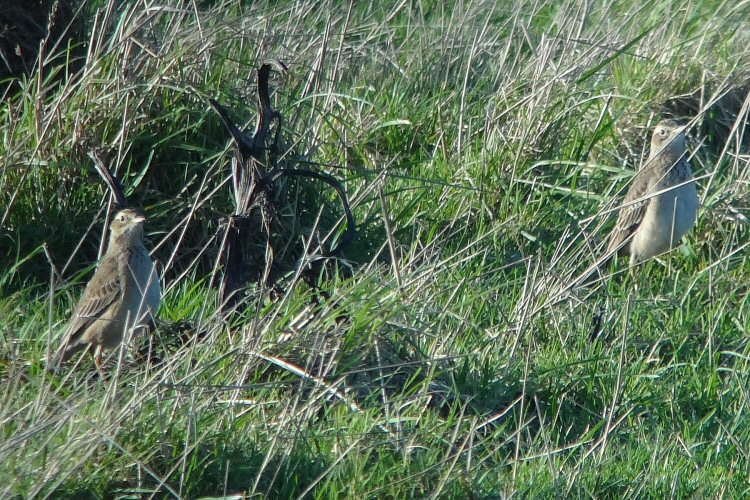
Richard's Pipits, Flamborough Head, East Yorkshire (Photo: Tony Dixon)

Red-rumped Swallow, Holkham, Norfolk (Photo: Chris Cook)
A New Year treat for Cheshire birders came in the form of a Pallas's Warbler at Heswall from 2nd, while the Dusky Warbler continued to show at times at Ham Wall, Somerset. At least 14 Yellow-browed Warblers was a strong total for the turn of the year, typically showing a south-westerly bias, with Scilly, Cornwall (two), Devon (three), Somerset (three, including two together in Yeovil), Dorset, Hampshire and the Isle of Wight all holding birds. One at Brent Reservoir, London, from 23–1st was a great mid-winter record for the capital, while another remained at Flamborough Head, E Yorks, to 23rd. More exceptional was a Common Whitethroat on St Mary's, Scilly, on 3–4th, while a Lesser Whitethroat remained in Falmouth, Cornwall, throughout.
Pallas's Warbler, Heswall, Cheshire (Video: Steve Williams)
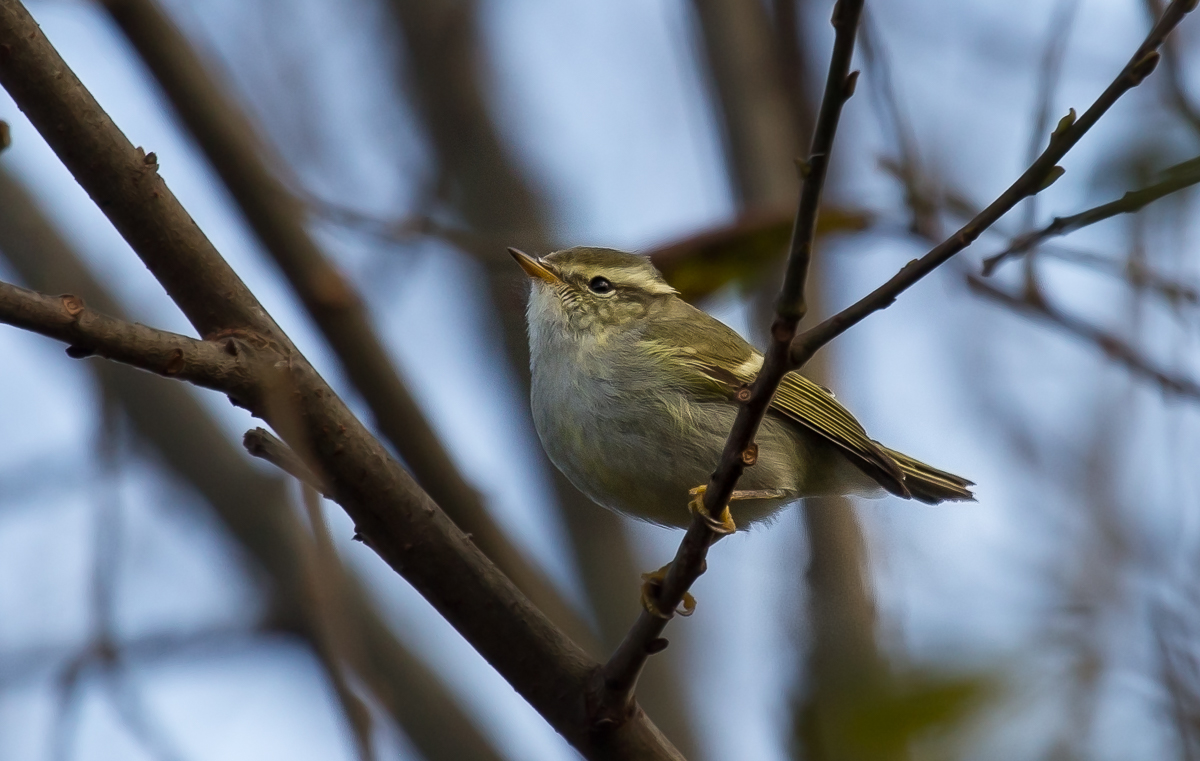
Yellow-browed Warbler, Yeovil, Somerset & Bristol (Photo: Chris Griffin)
In Cornwall the adult Rose-coloured Starling continued to frequent Lizard village throughout the fortnight and was reported with some regularity early in the New Year — presumably thanks to Ross's Gull twitchers in the area. Up to three Penduline Tits were again at Titchfield Haven, Hants, from 29th, though not reported every day. A female European Serin was at Fen Drayton Lakes, Cambs, on 4th.
Western Palearctic news
A busy fortnight saw a number of great birds discovered around the region — not least Hungary's first Naumann's Thrush, which was found in Budapest on New Year's Eve and observed for just a couple of hours before it disappeared. Lithuania also scored a first in the form of a Black-throated Accentor trapped and ringed at Ventes Ragas on 24th, though mid-December's Pacific Diver at Lake Silvaplana, Switzerland, was unfortunately found dead on 26th.
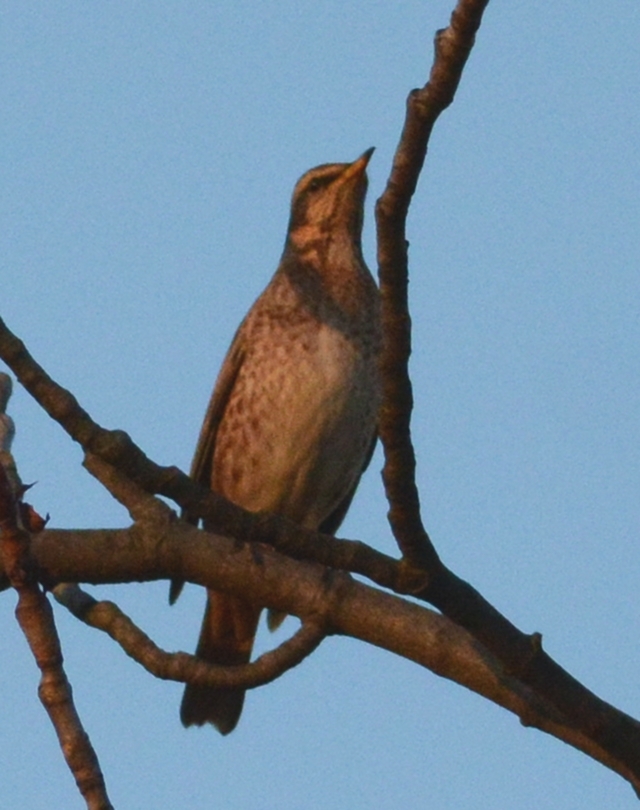
Naumann's Thrush, Hungary (Photo: Csaba Lendvai)
It proved a fantastic couple of weeks for Hooded Mergansers, with perhaps three in Iceland, including a female-type remarkably joining the returning adult drake at Helluvatn, Reykjavík, from 28th. Another female was found on Suðuroy, Faroe Islands, on 28th and lingered into 2016, while two (a first-winter drake and a female) at Flamengos, Faial, Azores, on 4th were presumably the same birds seen on São Jorge in late November.

Hooded Merganser, Faroe Islands (Photo: Silas Olofson)
Other Azorean records included a Double-crested Cormorant on São Miguel and American Coots on São Miguel and Pico. An Intermediate Egret on Boa Vista, Cape Verde, completed the list of vagrants on the Atlantic islands.

Double-crested Cormorant, Azores (Photo: Gerby Michielsen)
Elsewhere, there was a Black-winged Kite in northern Italy, another Swiss first in the form of two Hume's Leaf Warblers at Bolle di Magadino on 29th, at least one Azure Tit continuing in Finland, Great Bustard and Whiskered Tern in Poland (the latter a first winter record for the country), Oriental Turtle Doves at Bergen, Norway, on 22nd and Tórshavn, Faroe Islands, on 5th, the female Pine Bunting still showing well in the Netherlands and a Lesser Flamingo in Kuwait on 25th.

Oriental Turtle Dove, Faroe Islands (Photo: Silas Olofson)


